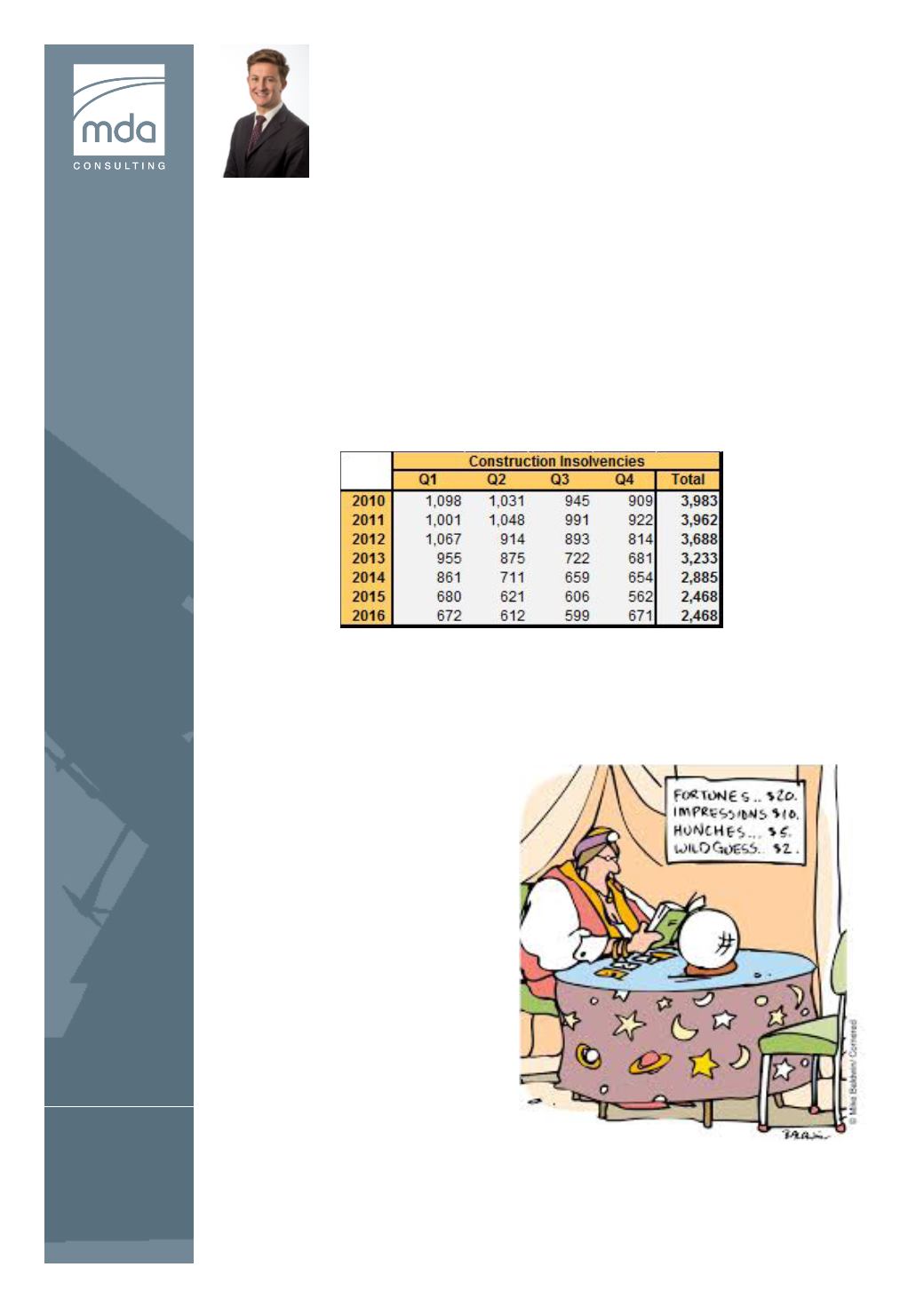
Chris Lester, Associate
The latest figures presented by the Insolvency Service show that in the 12 months
ending Q4 2016, the level of construction related insolvencies was the same as the
previous 12 months (to Q4 2015), which is the first time the number of insolvencies
has not declined (year on year) since 2010. The table below provides an overview
of the insolvency figures. Statistics are presented with a lag of a quarter, allowing
time for more complete data to be collected by industry. We eagerly await the latest
figures for the period Q1 2017. Nevertheless, the latest figures published, indicate that
construction related insolvencies increased for the first time between Q3 and Q4, which
was the first quarterly rise between Q1 and Q4 in any year, since before 2010. The
construction industry often reflects the health of the economy and when the industry is
doing well, the country and economy as a whole is doing well with fewer insolvencies.
Figures taken from Insolvency Service
Interest rates fell to 0.5% in April 2009, with a more recent reduction of 0.25% in August
2016 to an historic all-time low. This is likely to have been one of the key factors to have
contributed to the declining levels of construction insolvencies, with so called ‘zombie
companies’ being able to cover debt
repayments, along with, of course,
an increase in opportunities within
the sector given the overall strong
economy. The length of time that
interest rates have been at such
a low level, will have also enabled
companies to restructure internally,
allowing them to benefit long term.
However, the uncertainty over Brexit
will have raised concerns on whether
this will have a significant negative
effect on the construction industry.
Construction output has not been
as strong over the last 18 months
and experts have cited government
spending cuts and changes to
private sector investment plans
(post-referendum) as likely reasons.
The outcome of the Government’s
negotiations post-triggering of Article 50, remains to be seen, though given its
protracted nature some businesses are expected to postpone commitments to major
capital expenditure until details are better known.
CONSTRUCTION INSOLVENCY


